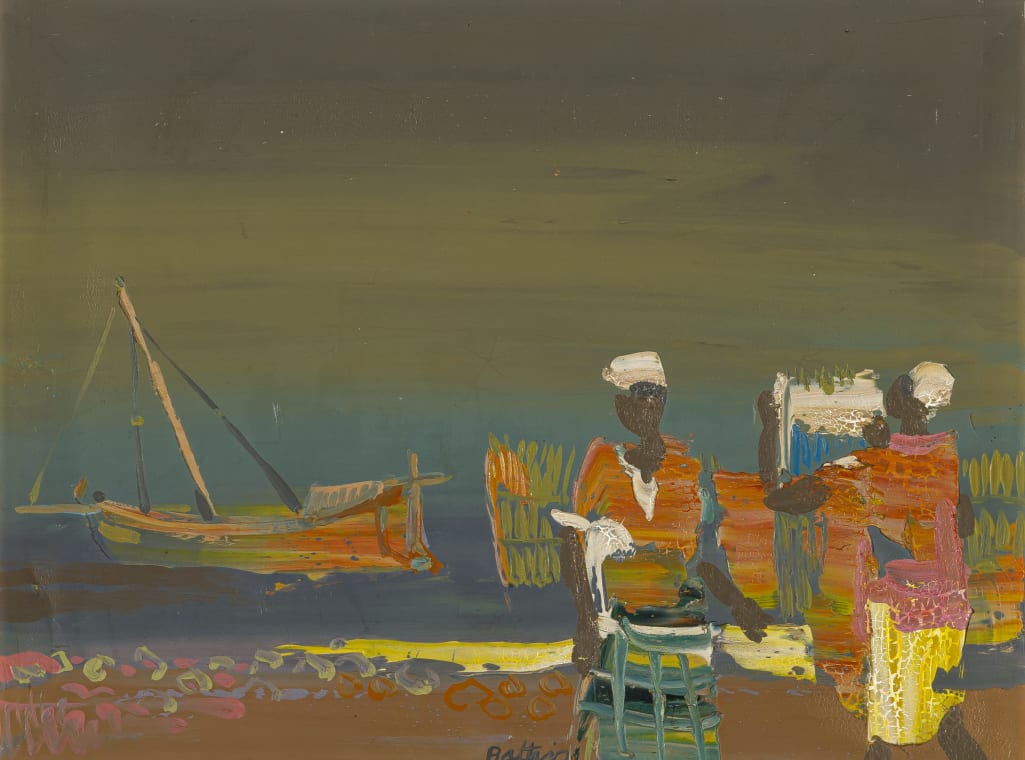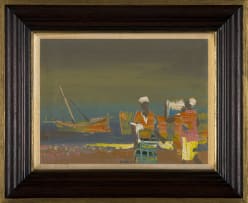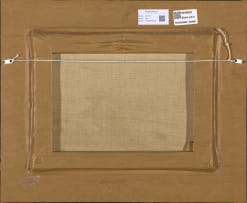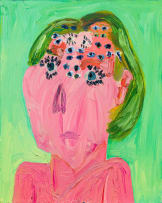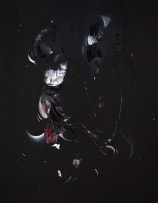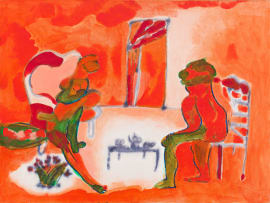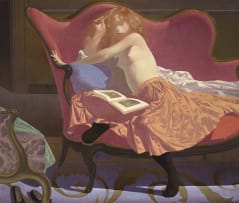Evening Sale: Modern and Contemporary Art
Live Virtual Auction, 19 September 2023
Modern and Contemporary Art
Incl. Buyer's Premium & VAT
About this Item
signed
Notes
The vibrant seafaring cultures of East Africa, which are linked through trade and culture with Southern Arabia and the Indian subcontinent, proved magnetic for generations of South African painters. Walter Battiss was a relative latecomer to the scene. He visited the coastal parts of Tanzania and Kenya, including the islands of Lamu and Zanzibar and the beach resort of Malindi, in 1961 - long after visits by Oerder, Pierneef, Preller and Stern, and right at the cusp of colonial transition. Battiss quickly made up for lost time. In 1964, he travelled to the Bajun Islands in southern Somalia, and a year later visited the Hadhramaut region in Southern Arabia, a territory once known as the incense coast.
Battiss recorded his experiences in numerous drawings, paintings and photographs, some of which are gathered in the books Limpopo (1965) and Battiss in the Hadhramaut (1985). Similar to Stern's artists' books Congo (1943) and Zanzibar (1948), Limpopo offers piquant insights into the pleasures and consolations of travel for Battiss the artist. 'Curiosity,' he summarises, 'has been my excuse for experiences.'1 His drawings especially suggest how Battiss looked and understood what presented itself before him while travelling. He recorded industrious peoples engaged in simple labours connected to the sea. Telegraph poles, bicycles, boats and solid homes
were a hallmark of daily life.
Battiss drew on these observations in his paintings, which are notable for their description of gregarious assembly by working peoples. This is plain to observe in lots 148 and 147. Both lots showcase Battiss's assured brushwork and propensity to work in a colour-drunk, fauvist manner. Esmé Berman and Larry Scully were attuned to Battiss's vivid expressionistic and non-naturalistic use of colour. 'Today it is his colour more than any other quality that moves,' observed Scully at the start of Battiss's restless island hopping in the 1960s. 'He is undoubtedly South Africa's colourist par excellence.'2 Berman praised his more ambitious travel paintings for their 'Fauve-like tendency toward elimination of the third dimension and the creation of lively surface pattern out of interlocking colour motifs.'3
Arabia introduced Battiss to pattern and symbol. Although motivated to offer an expansive and descriptive view of communal living in the Hadhramaut, the recessive view in lot 146 is nonetheless richly patterned and devolves from factual statement in generally naturalistic colours into a weave of competing lines and elemental forms. Colour and pattern are the chief hallmarks of lot 150, which presents eleven rudimentary human figures set against a sky alive with birds. Battiss the traveller here cedes to Battiss the artist. The composition is a full-blown mythic statement and succeeds at what Battiss, in a piece of writing about the Bajun Isles, characterised as impossible in words: 'trying to recapture in language a sacred scene on a faraway island'.4
1. Walter Battiss (1965) Limpopo, Pretoria, J.L. van Schaik, page 17.
2. Laurence Scully (1963) Walter Battiss, Master's thesis, University of Pretoria, page 20.
3. Esmé Berman (1970) Art and Artists of South Africa, Cape Town. A.A. Balkema, page 4.
4. Battiss, page 43.
